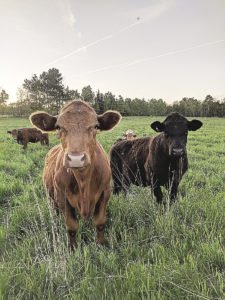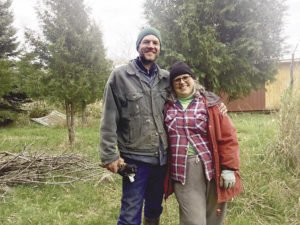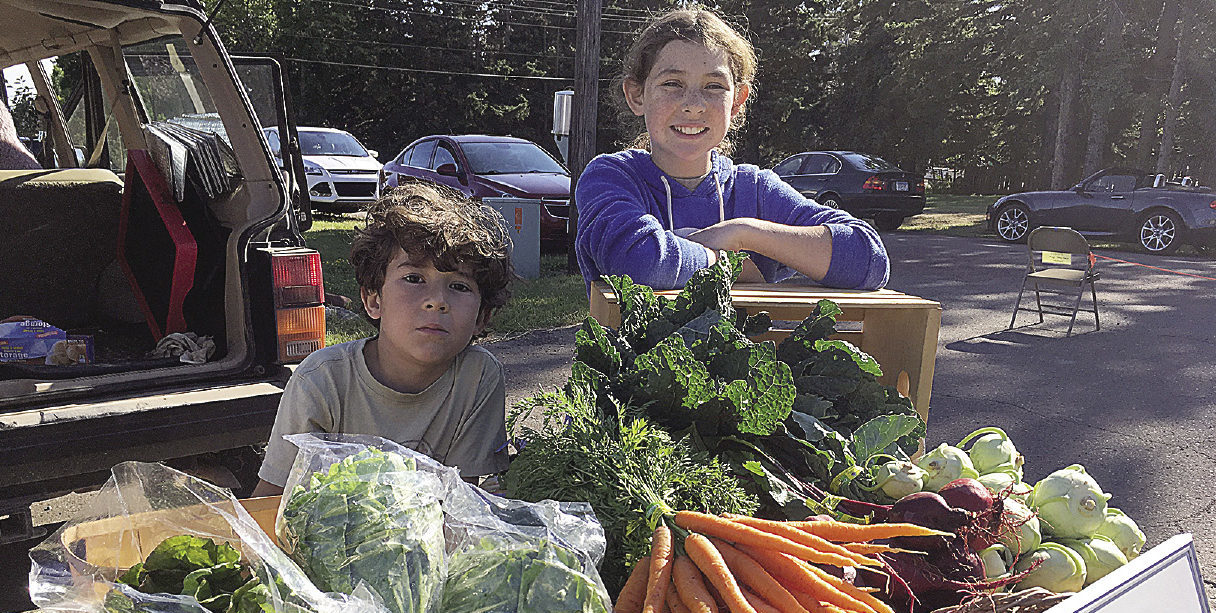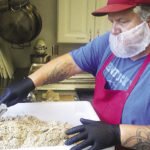When you think about the Northern Wilds, farming is not the first thing to come to mind. After all, this is the land of tall pines and sky-blue waters, moose and muskeg, brook trout and below zero. Who in their right mind would try farming here? Actually, there are farmers scattered across the Northern Wilds. The ones interviewed for this story appear to be of sound mind. They are making a go of farming, producing much loved local products.
“Northern Minnesota is a good place for small scale, diversified farms and sustainable agriculture,” says Cindy Hale of Clover Valley Farms near Duluth.
Across the agricultural breadbasket of the Upper Midwest, traditional farming has largely morphed into industrial scale operations growing primarily corn and soybeans. Livestock and poultry operations are large scale as well. But that is not the kind of farms you will find in the Northern Wilds. The producers we talked with are all pursuing different business models, but their customers are almost exclusively local families, co-ops, grocery stores and restaurants.
“There was a lack of fresh produce and people wanted it,” says Nick Wharton about his decision to begin farming vegetables near Grand Marais.
Wharton has a CSA (Community Supported Agriculture) operation where families buy shares and receive fresh produce weekly during the growing season. In addition, he sells produce weekly at a local farmers market and supplies some local restaurants. He raises chickens, too.
While hardscrabble farms have been a part of the North Shore since the pioneer era, the broad, fertile valleys outside of Thunder Bay have a long farming tradition. The countryside actually looks like farm country. Some families have been working the land for generations.
“I was born on this farm,” says Bruce Forrest. “Originally, my father had a mixture of potatoes, chickens and dairy cows.”
Forrest grew up on the farm, but moved away as a young man to study aspects of animal husbandry and pursue a career. He later moved back to Thunder Bay and began a business as an AI technician, servicing local dairy operations. AI is the acronym for artificial insemination. He and a partner began training local farmers to breed their own cows, which, combined with transition to larger and fewer dairy operations, ultimately led to less work for them. He began renting his father’s farm and subsequently purchased it in 1980. He raises beef cattle.

On the other end of the spectrum are Jon Hollway and Aly Wood, a young couple who purchased a farm a year ago. Their operation, named Corbett Creek Farms and Creative Centre, combines raising hogs and cattle with hosting events on their property and in their barn.
“We just had our first wedding at the farm last weekend,” Hollway said. “They used one of our pigs for a hog roast.”
What the couple lacks in farming knowledge they make up with enthusiasm. They’ve found local farmers are so willing to help them out that they plan to devote a day out of their work week to helping neighboring farms when a few extra hands are needed. While their farming effort is focused on livestock, they see hosting events as a way to engage with the community and market their meat. Wedding planners have visited the farm and will add them to a list of available venues in the coming year. They’ve hosted concerts in the barn and have had the site used for traditional hide-tanning classes.
FINDING THEIR NICHE
If farmers in the Northern Wilds have something in common, it is a willingness to try new things. Since they are small scale, they need to appeal to a local customer base.
At Clover Valley Farms, Hale says she and husband Jeff Hall started out with seasonally pastured chickens. Because their heavy, clay soil wasn’t conducive to vegetables, they began planting orchards and experimenting with native small fruits and herbs. The seasons were short, and fruits and herbs are highly perishable, so they explored developing value-added products. They now produce a popular line of gourmet vinegars. They also raise hogs and turkeys and have started working with sheep.
In Thunder Bay, Forrest has watched farming operations change over time. For instance, there are fewer dairy farms, but those in business invest in modern technology. As for beef, Forrest was one of the first in the area to begin breeding calves from “conception to consumer.” He raises them for a year to sell in the spring, when they weigh about 650 pounds. In the past, customers wanted to purchase a side or quarter of beef. Now they want to buy smaller amounts.
“They also want something quick and convenient,” Forrest says. “Lots of families don’t have time to cook meals.”
He gets hamburger patties made by the local abattoir that slaughters his cattle. Some of the beef goes to a local meat shop that makes sausage to Forrest’s recipes. In this way, he continues to deliver a farm-to-table product.
Wharton, who says he learns something new every day, has slowly expanded his operation. Since Cook County is lightly populated, he and other local producers wonder if they will eventually reach a ceiling where their market is saturated. That said, he plans to add more CSA customers next year and expects there will be more restaurants seeking local produce. Part of the challenge for restaurants is that due to the short growing season, various locally fresh vegetables are only available for a short period of time. That makes them hard to incorporate into a menu.
WHY DO IT?
Clearly, the farmers of the Northern Wilds march to the beat of a different drummer. Given the challenges of a cold climate, heavy soils and small markets that they face, what motivates them to pursue farming?

“Aside from basic insanity, why do we choose this lifestyle?” asks Hale, then answers her question. “It’s about a lifestyle choice and how we raise our daughter. Also farming allows us to be part of Duluth’s vibrant arts/foodie community.”
Wharton notes that even though he is the primary tender of his crops, he enjoys the involvement of the entire family. His wife, Kristen, handles emails and the CSA member newsletter. His children, Henry (15), Mary June (11) and Eli (7), assist with chores (shown above). Even his mother and her husband visit during the summer to help out on the farm. But he also notes that part of his success is attributable to a personality trait.
“I’m kinda’ stubborn, which helps with farming up here,” he says. “If you are not up to the challenge, you won’t be successful.”
Hollway and Wood both completed the outdoor program at Lakehead University and are avid wilderness trippers. They are finding farming to be a satisfying substitute, because it gives them a reason to be outside every day. They’ve hosted youth groups at the farm, which they find satisfying as well, arranging the visits through friends from school who are now teachers. Whether through farming or old college friends, they value their web of connections to the community.
“We want our farm to be open so people have a space to do things,” Wood says. “We want it to benefit the community.”
With decades of experience in agriculture, Forrest offers perspective. He notes that during the 1960s, a dairy farmer could get started for about $50,000 and make a go of it. Doing so today may require a $500,000 investment. He advises young farmers to minimize their debt, such as acquiring “slightly used or really used” machinery rather than new. He is confident farmers will continue to find local, niche market for their products, because “people are still going to eat.” But his real key to success runs a little deeper than that.
“You need a partner who is understanding and works with you as a team,” he says.
That partner is his wife, Valve. When you get right down to it, farming in the Northern Wilds is a family affair.




